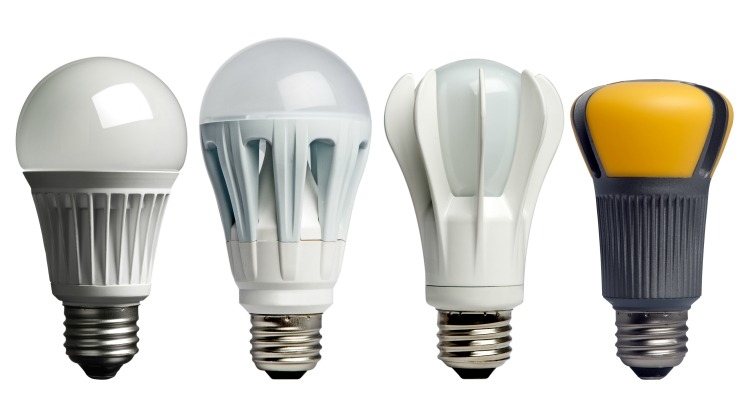Convert to LED Lighting
The light-emitting diode (LED) is one of today's most energy-efficient and rapidly-developing lighting technologies. Quality LED light bulbs last longer, are more durable, and offer comparable or better light quality than other types of lighting. Check out the top 8 things you didn't know about LEDs to learn more.
ENERGY SAVINGS
LED is a highly energy efficient lighting technology, and has the potential to fundamentally change the future of lighting in the United States. Residential LEDs -- especially ENERGY STAR rated products -- use at least 75% less energy, and last 25 times longer, than incandescent lighting.
Widespread use of LED lighting has the greatest potential impact on energy savings in the United States. By 2027, widespread use of LEDs could save about 348 TWh (compared to no LED use) of electricity: This is the equivalent annual electrical output of 44 large electric power plants (1000 megawatts each), and a total savings of more than $30 billion at today's electricity prices.
Learn more about how energy-efficient lightbulbs compare with traditional incandescents.
HOW LEDS ARE DIFFERENT
LED lighting is very different from other lighting sources such as incandescent bulbs and CFLs. Key differences include the following:
- Light Source: LEDs are the size of a fleck of pepper, and a mix of red, green, and blue LEDs is typically used to make white light.
- Direction: LEDs emit light in a specific direction, reducing the need for reflectors and diffusers that can trap light. This feature makes LEDs more efficient for many uses such as recessed downlights and task lighting. With other types of lighting, the light must be reflected to the desired direction and more than half of the light may never leave the fixture.
- Heat: LEDs emit very little heat. In comparison, incandescent bulbs release 90% of their energy as heat and CFLs release about 80% of their energy as heat.
LED PRODUCTS
LED lighting is currently available in a wide variety of home and industrial products, and the list is growing every year. The rapid development of LED technology leads to more products and improved manufacturing efficiency, which also results in lower prices. Below are some of the most common types of LED products.
INDUSTRIAL AND COMMERCIAL LIGHTING
The high efficiency and directional nature of LEDs makes them ideal for many industrial uses. LEDs are increasingly common in street lights, parking garage lighting, walkway and other outdoor area lighting, refrigerated case lighting, modular lighting, and task lighting.
UNDER-CABINET LIGHTING
Because LEDs are small and directional, they are ideal for lighting countertops for cooking and reading recipes. The color can appear more cool or blue than is typically desirable in a kitchen, and there can be some excessive shadowing in some fixtures, so it is important to compare products to find the best fixture for your space.
RECESSED DOWNLIGHTS
Recessed downlights are commonly used in residential kitchens, hallways, and bathrooms, and in a number of office and commercial settings. DOE estimates there are at least 500 million recessed downlights installed in U.S. homes, and more than 20 million are sold each year. Both CFL and LED technology can decrease downlight wattage by 75% or more. See the Solid-State Lighting website for a quality comparison of incandescents, CFLs, and LEDs in downlights .
LED REPLACEMENT BULBS
With performance improvements and dropping prices, LED lamps can replace 40, 60, and even 75 Watt incandescent bulbs. It's important to read the Lighting Facts Label to make sure the product is the right brightness and color for the intended location. When chosen carefully, LED replacement products can be an excellent option. See the Solid-State Lighting website for information about general service LED lamps

